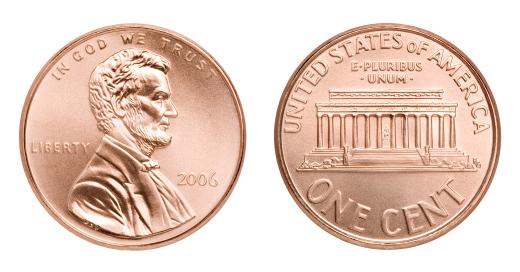Copper is a reddish brown nonferrous mineral which has been used for thousands of years by many cultures. The metal is closely related with silver and gold, with many properties being shared among these metals. Modern life has a number of applications for copper, ranging from coins to pigments, and demand for the metal remains high, especially in industrialized nations. Many consumers interact with it in various forms on a daily basis.
Archaeological evidence suggests that copper is among the earliest metals used by humans. Numerous digs all over the world indicate that it was used to make utensils, jewelry, and weapons. The metal is highly ductile, meaning that it can be easily worked and pulled into wire. For cultures which had minimal or crude metalworking abilities, it would have been easy to shape and work with. It is also easy to alloy, and many of the early metal alloys featured this metal.

The name for the metal comes from Kyprios, the Ancient Greek name for Cyprus, an island which had highly productive copper mines in the Ancient world. Its atomic number is 29, placing it among the transition metals. The metal is highly conductive of both electricity and heat, and many of its uses take advantage of this quality. Copper can be found in numerous electronics and in wiring. It is also used to make cooking pots. This metal is also relatively corrosion resistant, since it forms a patina which resists oxidation. For this reason, it's often mixed with other metals to form alloys such as bronze and brass.

In addition to being useful in manufacturing, copper is also a vital dietary nutrient, although only small amounts of the metal are needed for well-being. It appears in several enzymes, facilitates the absorption of iron, and helps to transmit electrical signals in the body. In high doses, however, the metal can be extremely toxic. Copper can also saturate the water and soil, posing risks to wildlife. On a more benign level, it can stain clothing and flesh, as many people have probably noticed.

In a natural state, copper is rarely found pure. It is compounded with other elements, and the material must be treated before it can be sold. This can lead to serious environmental problems, especially when mining companies engage in unsound practices. The chemicals used to extract the metal can be toxic, as can the discarded elements and runoff associated with its purification. Many countries attempt to regulate their copper industries to prevent widespread pollution and the problems associated with it.
Frequently Asked Questions
What is copper and where is it commonly found?

Copper is a reddish-brown, malleable metal that is highly conductive of electricity and heat. It's found in various mineral forms such as chalcopyrite and bornite. Major copper mines are located in Chile, Peru, and China, with Chile being the world's largest producer, contributing to about 28% of global copper production.
How is copper used in everyday life?

Copper is integral to modern living, with its primary use in electrical wiring due to its excellent conductivity. It's also found in plumbing, heating and cooling systems, and in the construction industry. Additionally, copper is a key component in renewable energy systems, such as solar panels and wind turbines, and is essential in the manufacturing of electric vehicles.
What are the environmental impacts of copper mining?

Copper mining can have significant environmental impacts, including habitat destruction, soil erosion, and water pollution from tailings and other waste. Acid mine drainage can lead to the leaching of heavy metals into waterways, affecting aquatic life. However, advancements in mining technology and regulations aim to reduce these impacts.
Can copper be recycled, and if so, how effective is the process?

Yes, copper is highly recyclable and retains up to 95% of its original value and properties after recycling. The recycling process is quite effective and environmentally beneficial, as it uses up to 85% less energy than primary production. According to the Copper Development Association, nearly as much copper is recovered from recycled material as is derived from newly mined ore.
What are the health benefits and risks associated with copper?
Copper is an essential trace mineral necessary for survival. It plays a vital role in iron metabolism, immune system function, and the maintenance of bone, connective tissue, and brain health. However, excessive copper intake can lead to toxicity, causing gastrointestinal issues, liver damage, and other health problems. It's important to maintain a balanced level of copper in the diet.
How does copper's conductivity compare to other metals?
Copper is the second most conductive metal after silver, making it the preferred choice for most electrical applications due to its balance of conductivity, ductility, and cost-effectiveness. According to the International Copper Association, copper's electrical conductivity is 100% IACS (International Annealed Copper Standard), which is a benchmark for comparing the electrical conductivities of various materials.
Ever since she began contributing to the site several years ago, Mary has embraced the exciting challenge of being a AllThingsNature researcher and writer. Mary has a liberal arts degree from Goddard College and spends her free time reading, cooking, and exploring the great outdoors.
